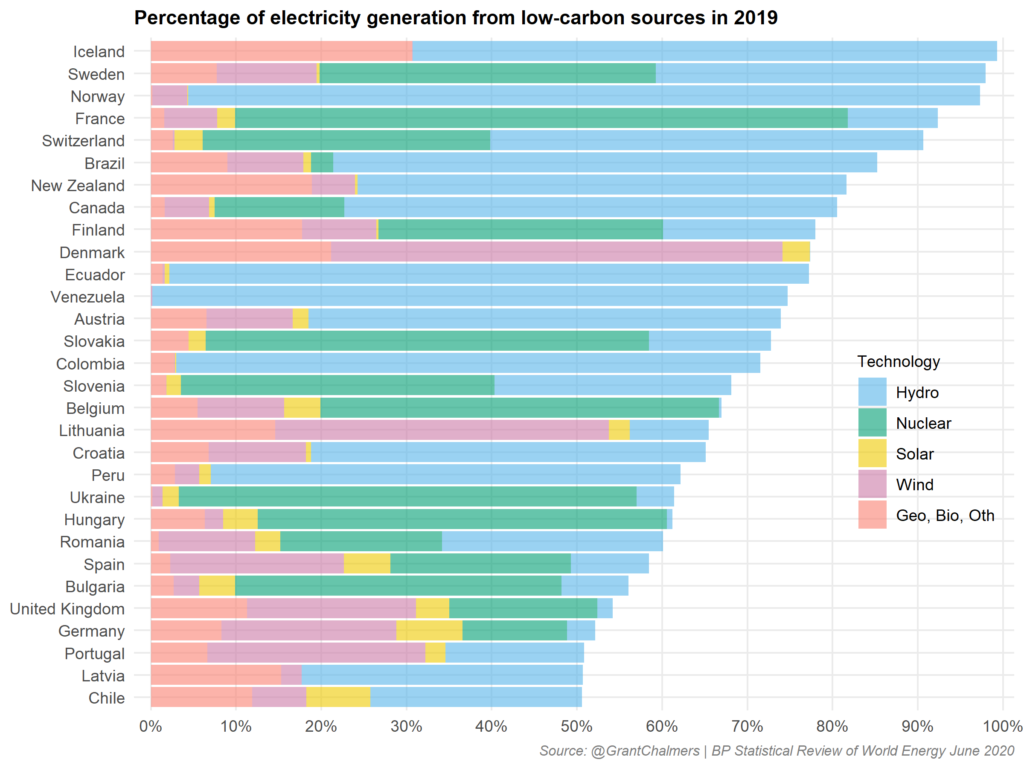Welcome nuclear newcomer countries to the nuclear family
So far in 2021 two new countries have started producing nuclear energy for the first time. The UAE has put the first unit of its 4-unit Barakah plant into service with the second one following close behind. In Belarus, it is the same story, as the first unit of the Ostrovets station entered service and the second is going through its start up.
We know that the countries that have the lowest carbon emissions rely on either hydro or nuclear power (or both) as the backbone of their electricity systems. And these countries have achieved this low carbon footprint in reasonable time frames. So, a country like the UAE who has almost 100% fossil fuelled electricity will quickly decarbonize as the four-unit Barakah plant comes into service at which time nuclear will be 25% of their mix. Their further investments in renewables will help them meet their carbon targets.

Often when considering the future of nuclear power, the case of Germany comes up. Here we have a high-tech industrialized country who has decided to not only meet its climate goals without nuclear power but has put phasing it out as a higher priority than reducing emissions. This is often given as the example to demonstrate that nuclear has no future in a clean energy world.
Nothing could be more wrong. These decisions tend to be purely for ideological reasons. Germany who has invested heavily in renewables while at the same time phasing out nuclear power has struggled to meet its carbon objectives. Belgium announced it would build new gas plants to replace its nuclear fleet given its commitment to a nuclear phase out. Frankly, these countries have every right to meet their carbon targets as they see fit. But if they are so certain that renewables can do it alone, then they should just do it and remove nuclear when it is no longer needed. But this is not the case. Each of these countries has had to rely more on fossil fuel when nuclear is removed from their systems even as they invest heavily in new renewables.
Given the urgency of decarbonizing the world, the solution is clear. Countries that rely on fossil fuel for their energy should pursue both hydro and nuclear for their baseload needs and supplement with renewables to fully decarbonize their systems. Unfortunately, hydro is limited by geography but nuclear can be implemented almost anywhere. This means nuclear is an important option and countries planning to decarbonize are taking note.
According to the IAEA there are up to 30 countries looking into nuclear power for the first time.
The World Nuclear Association (WNA) has just this month updated it biannual Nuclear Fuel Report. In this report the industry surveys companies around the globe to develop its scenarios. This year’s update sees an expansion of the market with new countries embarking down the path of deploying nuclear power. In the reference scenario there are 9 new countries including Bangladesh, Egypt, Ghana, Indonesia, Kenya, Poland, Saudi Arabia, Turkey and Uzbekistan. Of these countries, Bangladesh, Egypt and Turkey have their first plants under construction. The Upper Scenario adds an additional 7 countries: Chile, Jordan, Kazakhstan, Nigeria, Philippines, Thailand and Vietnam. And there are others who are starting to consider nuclear for their future.
All of these projections do not take into consideration the increased demand on energy systems as the goal becomes net zero carbon emissions. Once those pledged to meet net zero by 2050 start to develop their plans, and with the new nuclear options such as SMRs entering the market, we expect to see many more countries taking a hard look at implementing nuclear as part of their future energy systems.
So, for those countries that are truly committed to decarbonizing their energy systems and want to deploy nuclear as part of their solution – welcome to the nuclear family – you are on the path to abundant, reliable, and economic low carbon energy.